The unexpected Isles of Scilly
Island nature beyond the seals and seabirds.
Hello, welcome to my monthly newsletter of nature highlights from recent walks.
My selection this time is quite different from usual – for a couple of short weeks in August, I swapped my woodland haunts for turquoise seas, sandy white beaches, seals, seabirds and exotic plants.
The Isles of Scilly are just 28 miles off the southwestern tip of Cornwall – little more than 200 miles from my mainland home (if I were a crow) – but without doubt a world apart.
I’ve been under their spell since I first visited more than two decades ago. Very many travel pieces extol the virtues of Scilly, so I won’t go on too much. Suffice to say, that I (like many others who appreciate nature, tranquillity and a slower pace of life) have become a repeat visitor.
For me, while the change of scene is always dramatic, the walks are now very familiar. The minute I arrive, exploration can begin, rediscovering each of the five inhabited islands (St Mary's, St Agnes, St Martin’s, Tresco and Bryher) and sometimes a few of the uninhabited ones, too.
Of course, I love the turquoise and white and the iconic wildlife, but the unexpected discovery of less conspicuous nature is often a highlight of a walk on Scilly. Here, I’ll show you a few of the things I found.
Alongside the sub-tropical plants, which enjoy the year-round mild climate that Scilly is famed for, native wildflowers thrive in the coastal habitat. Quite a few were still in flower in August, which helped my woodland-trained eyes to identify them.
Rooted in the cracks of an old granite slipway on Tresco was a scattering of rock sea-spurrey (a new species for me). Its pretty pink, five-petalled flowers are captivating but only about a centimetre across and borne on low-growing vegetation, so easily overlooked by passers-by. If I hadn’t spent a while taking photographs, I wouldn’t have noticed the plant’s sticky glandular hairs.
I’m pretty sure this is sea mayweed, growing in the sand in a beach-side boatyard on St Mary’s. The fairly large (4cm diameter) size of its daisy-type flowers means you can get a good look at their composite make up: each one a cluster of tiny, yellow disc-florets, forming a dome shape, encircled by larger, white ray-florets around the edge.
On an open sandy area, just behind Beady Pool on St Agnes, the yellow horned poppies were eyecatching but not the easiest to photograph with their messy, sprawling looks exacerbated by a stiff sea breeze. It’s the characteristic long, curved seedpods that give the plant its name. If you’re lucky, you might find the odd ceramic bead in this small bay, washed up from a shipwrecked Venetian ship in the 17th century (and yes, on occasion, the keen-eyed, treasure-hunting members of my family have been lucky).
Staying late one evening on St Martins (to indulge in the locally caught and grown fish and chips) saw me strolling along the beach as the sun was going down and spotting this striking architectural plant just in front of the dunes. Its neatly arranged, glossy green leaves make it quite distinctive – sea sandwort – hopefully, I’ll remember its ID next time I come across it.
One thing the Isles of Scilly lack, dare I say it, is much woodland, but one way to be immersed briefly in lush greenery is by following the magical, twisty path near Holy Vale, inland on St Mary’s. I believe the trees here are mostly elm. Like many other places in the UK this summer, the ground was much drier than usual, with board walks to cross marshy areas largely redundant.
As a zoologist, I’ve always loved the seashore environment, and exploring the coast of Scilly is a daily adventure when I’m there. Checking the tides soon becomes an obsession, essential to secure good rock pooling and make the most of periodic ultra-low waters, which occasionally allow you to walk between islands and always raise the possibility of uncovering even more remarkable creatures.
This year was a year of salps. These ones were stranded at low tide on the beach at Beady Pool on St Agnes, but I spotted others on several different islands. Apparently, there are more than 10 different salp species known from British waters; there were even some huge, hand-sized ones around Scilly this year.
Despite their transparent, gelatinous appearance, they are not jellyfish but tunicates (aka sea squirts). I believe the name derives from the tunic-like, transparent sacs that protect their bodies. The reddish-brown, circular organ towards a salp’s rear end is its stomach, where it directs food (mainly phytoplankton) filtered from the water.
For part of their complex life cycle, which alternates between sexual and asexual forms, salps assemble into long chains of individuals; I’ve seen photographs of these aggregates before, but this was the first time I’d come across one myself, albeit a fairly short one, stranded on the beach.
I’d love to see salp chains snaking along under water, jet-propelled, with each individual taking in water through a siphon at the front and using pulses of muscle bands along its body to expel it at the rear. But when a wave washed over this stranded chain, the individual salps instantly released their grip and dispersed.
The nearby shallow water was rich with tiny silvery fish (a rescue mission ensued for those trapped in rapidly drying rockpools) and swarming with small jellyfish, mostly mauve stingers, gently pulsing along. Among them, and scattered along the beach, were a few translucent and relatively solid-looking jellies. These crystal jellyfish are known to be bioluminescent (capable of glowing green) and relatively uncommon in British waters, though their presence may be increasing with warming seas. They can sting but apparently don’t cause much harm to humans. Just as well.
I’ve often spotted the odd bumblebee travelling alongside one of the passenger boats between islands and marvelled at how it could keep pace – or even overtake us. No wonder bee species are known to come and go on the islands, with several examples of recent successful colonisations from the mainland. I met one fairly new arrival on the north side of St Martin’s, its large aggregation of nesting burrows unmissable on the sparse vegetation next to the coast path.
The bees were in constant motion, but I did get a close look at one or two and believe them to be yellow-legged mining bees Andrena flavipes. The species was first recorded on St Mary’s in 1997 and has since been found on all the inhabited islands1.
At this time of year, at least, there seems to be good supply of pollen and nectar available for the bees and other insects, with swathes of purple heather, interspersed with gorse, becoming the essence of many parts of the islands.
Finally, I had a rare chance to capture a picture of a wild red squirrel with my phone. Introduced to Tresco in 2012 and 2013, red squirrels appear to be thriving here, in the absence of greys. This one, in Tresco Abbey Garden, was busy scoffing seeds from a pine cone and was clearly used to being watched.
I hope you enjoyed these glimpses of nature around of the Isles Scilly.
Thank you very much for reading.
Jane
Bee survey of the Isles of Scilly 2023, by Ian Beavis – an interesting read for fellow bee/Scilly lovers.


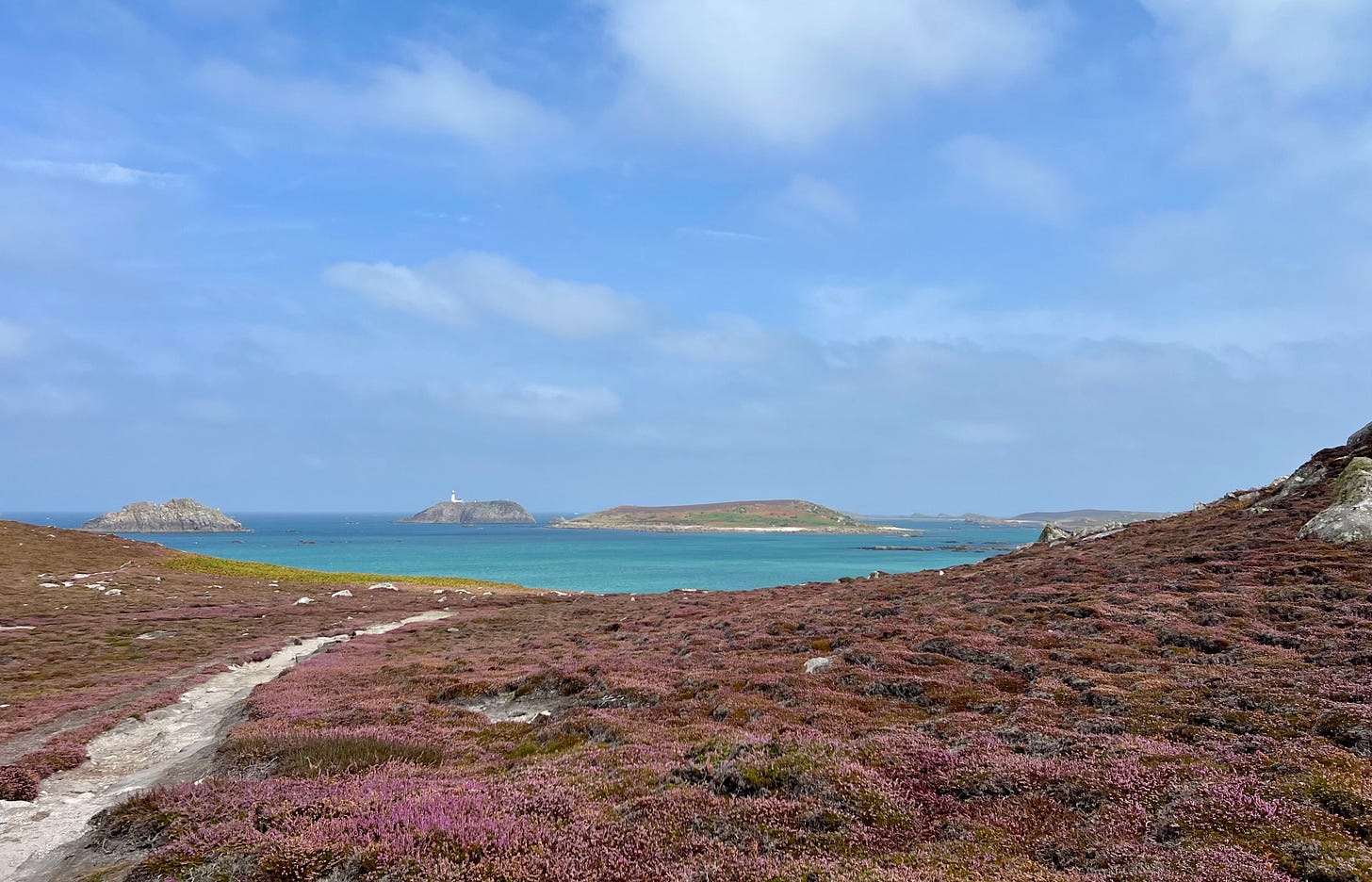
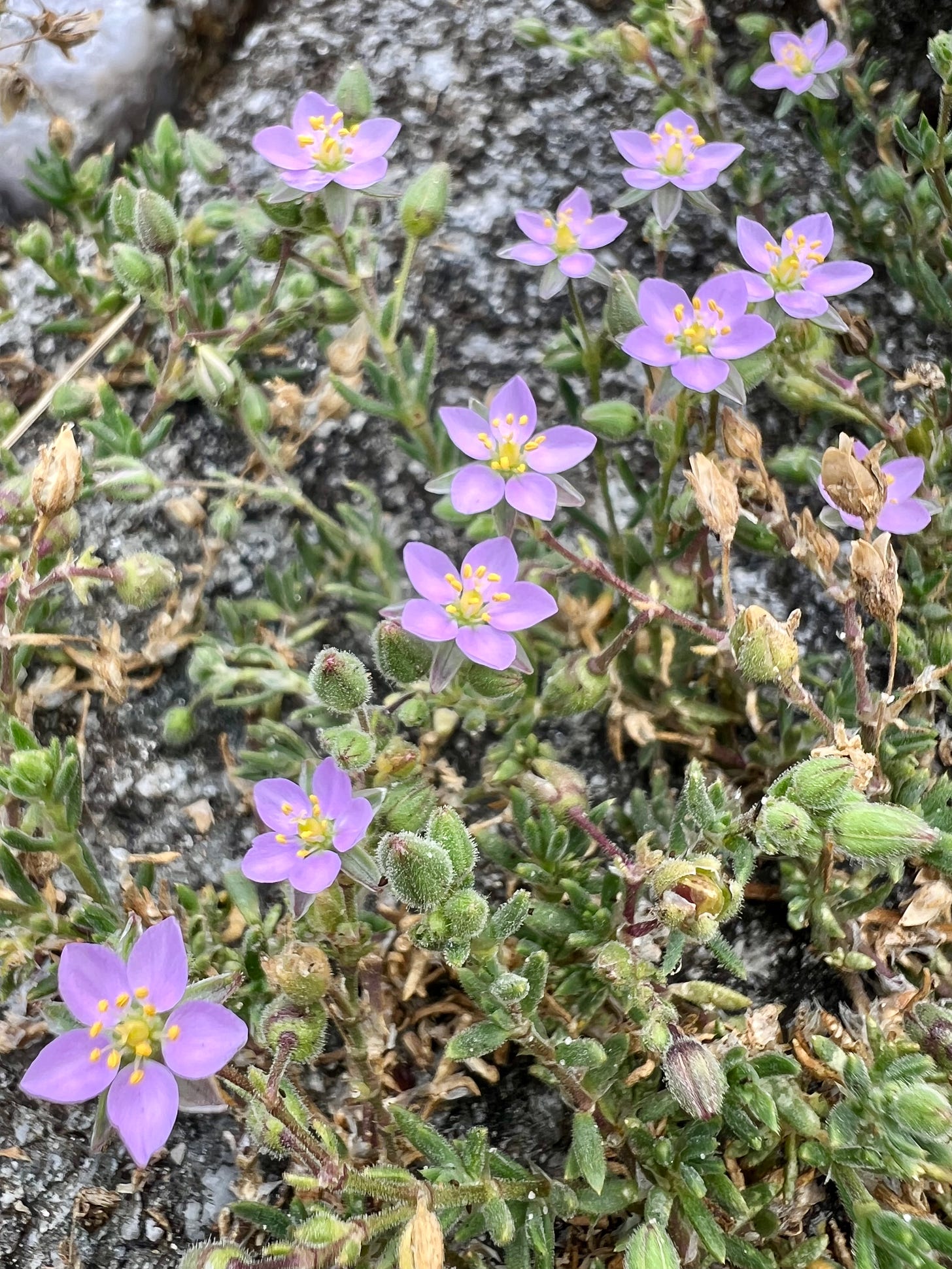
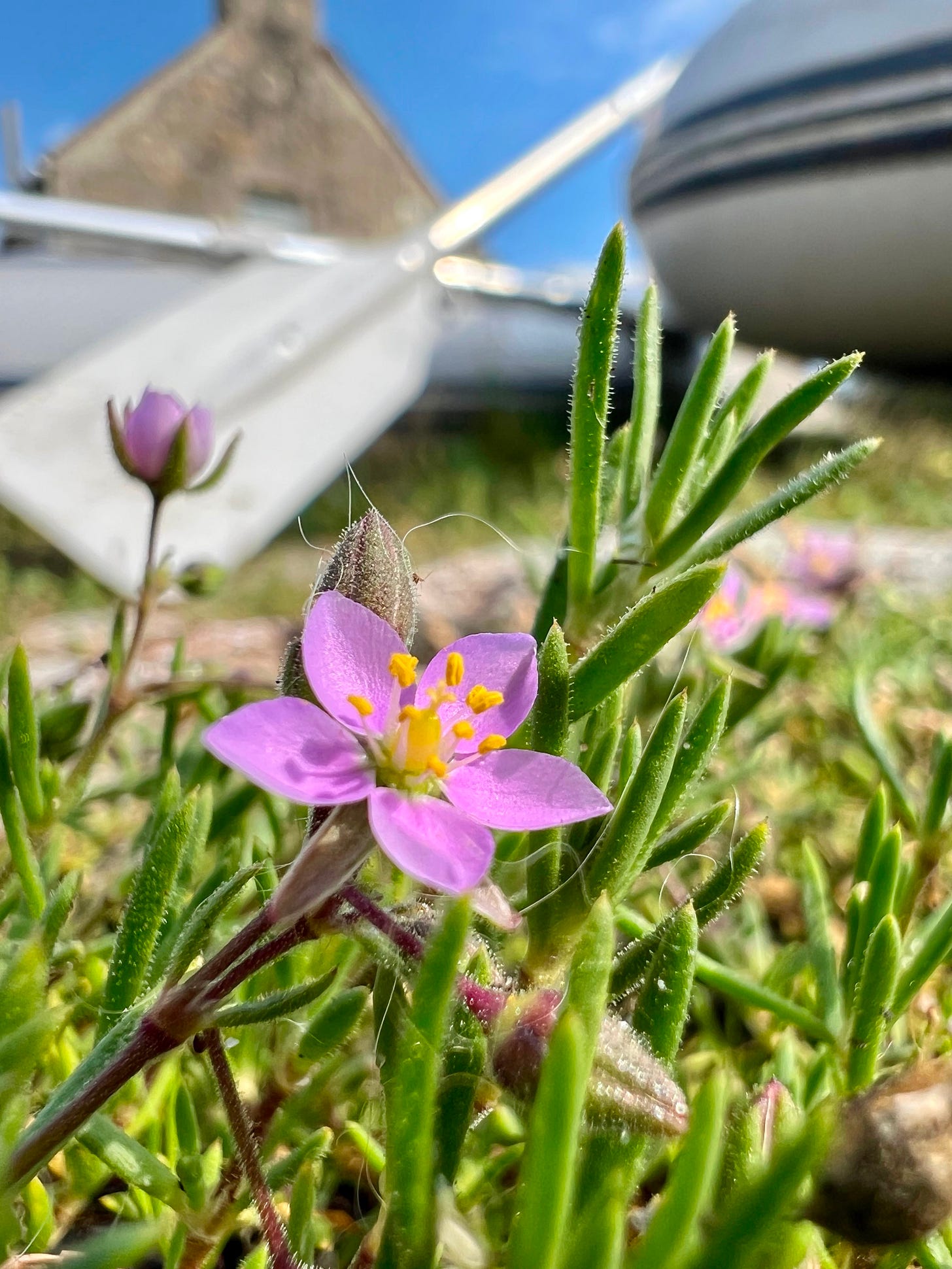
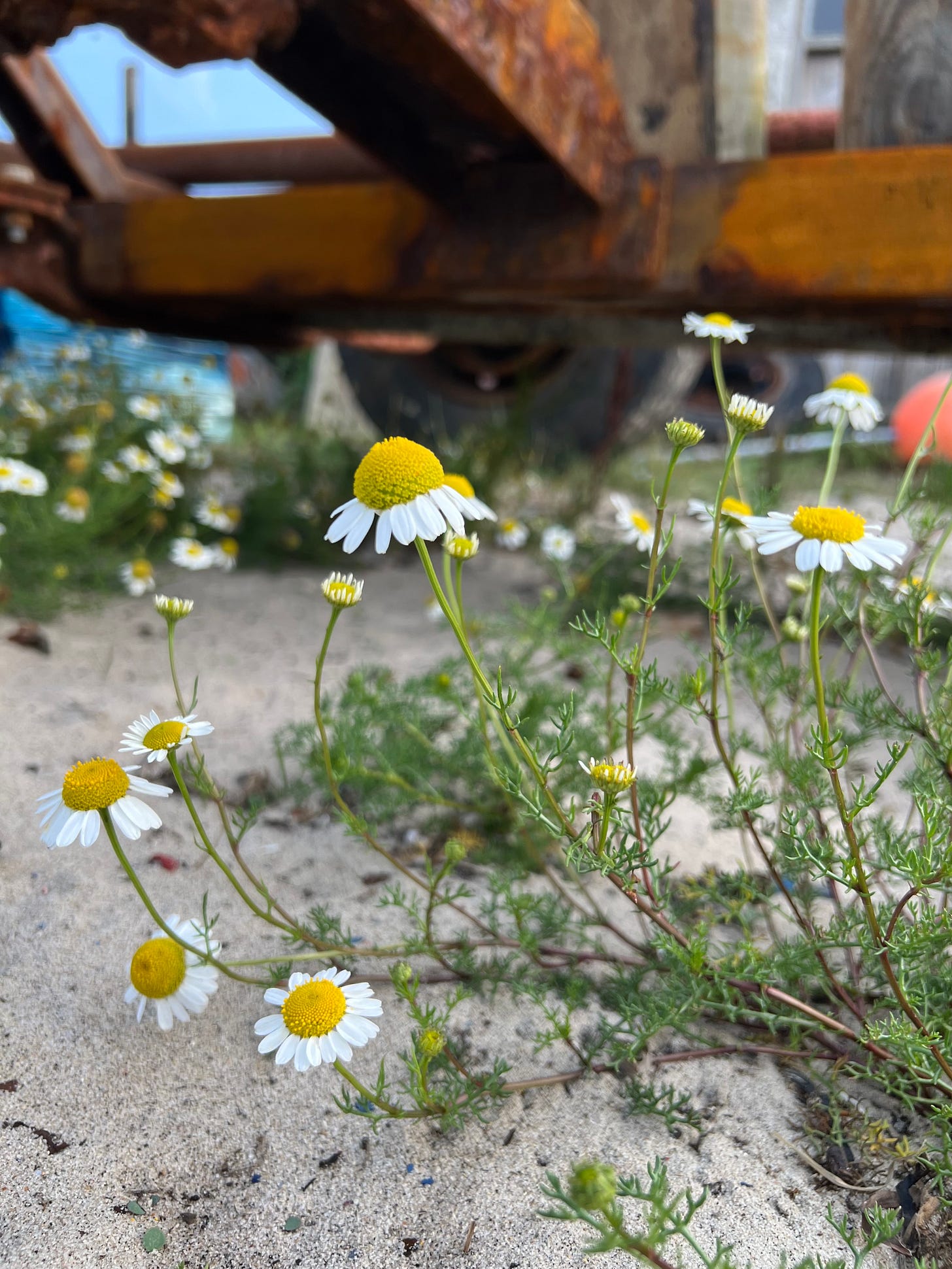
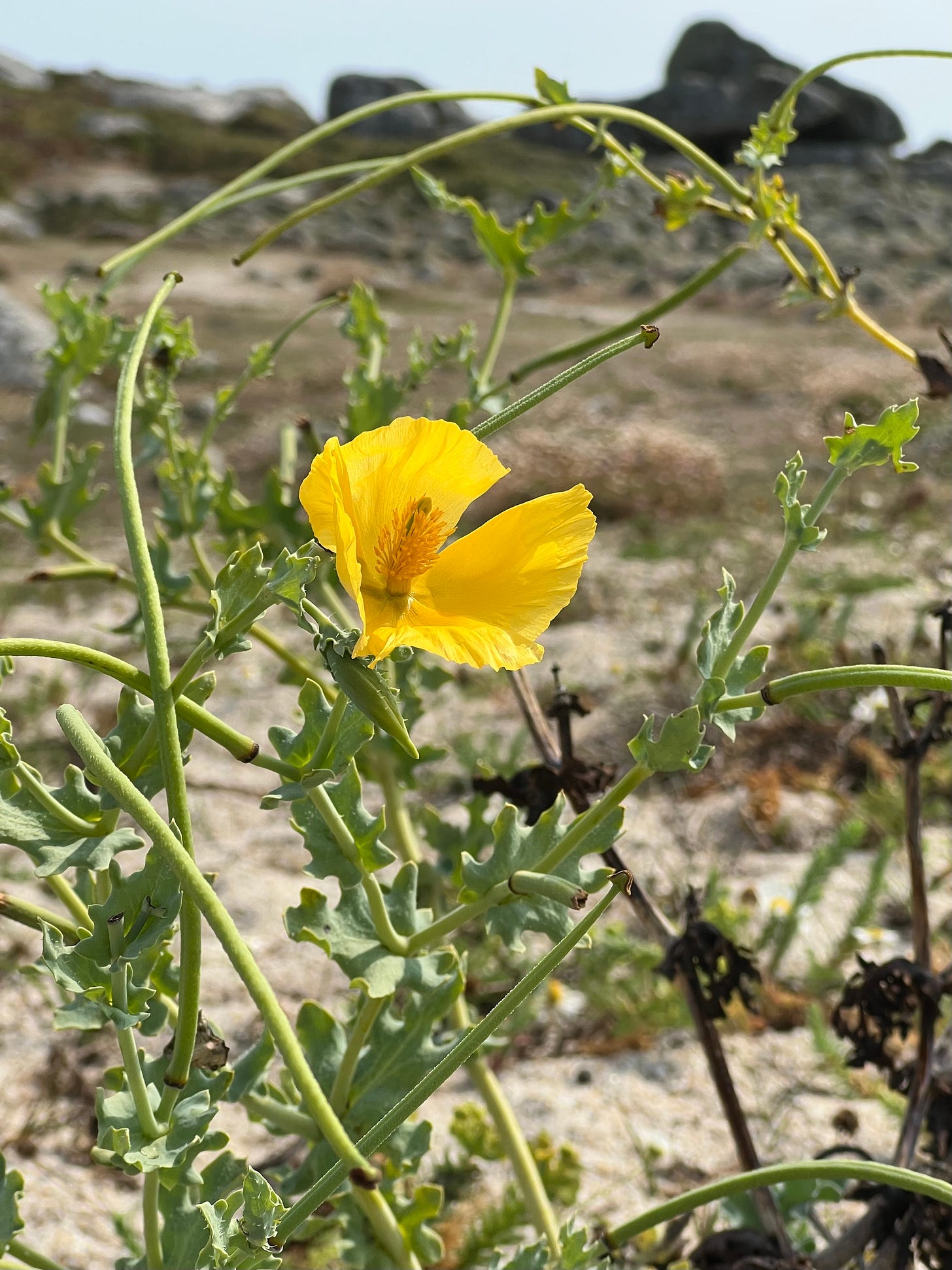
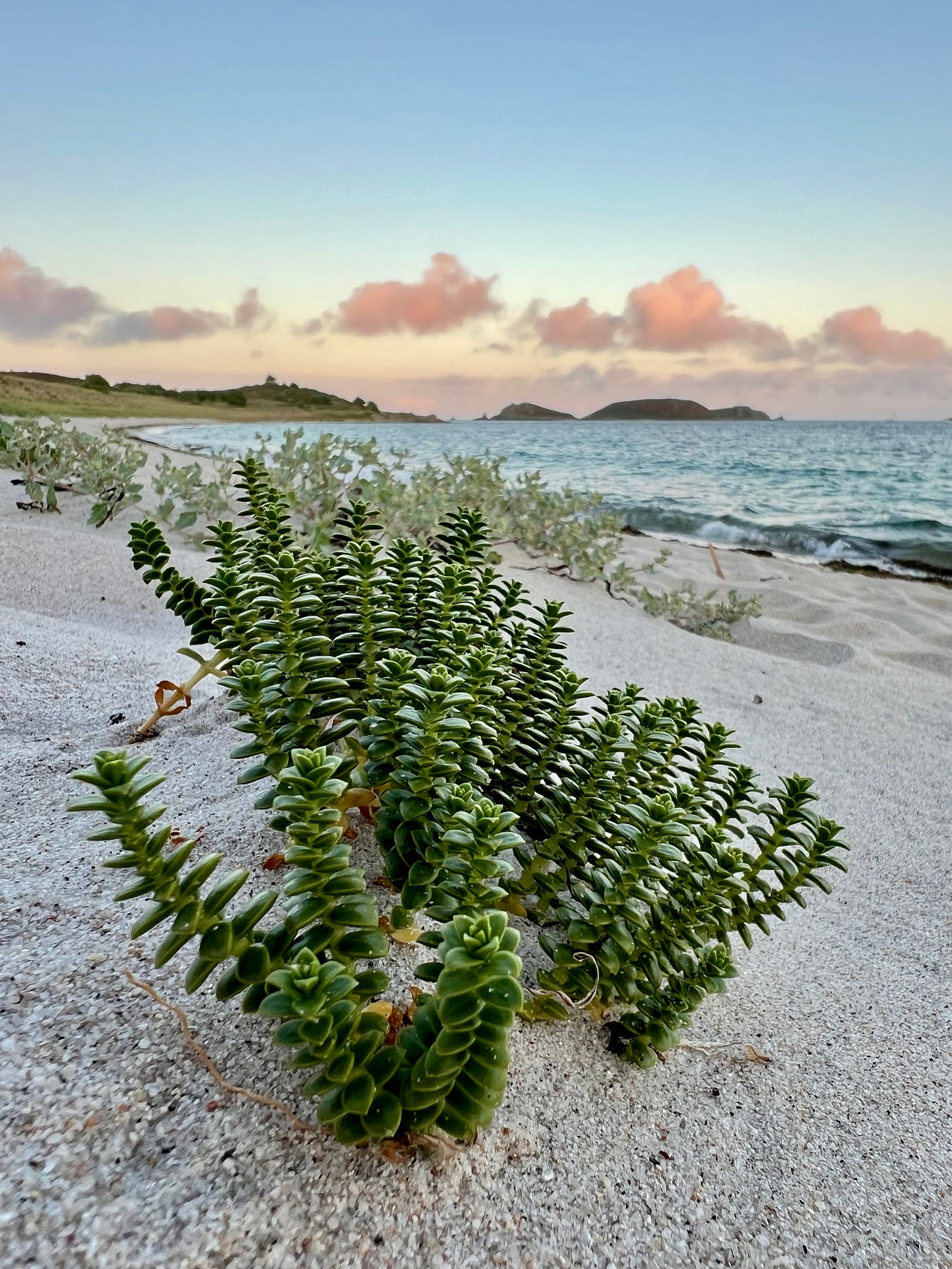

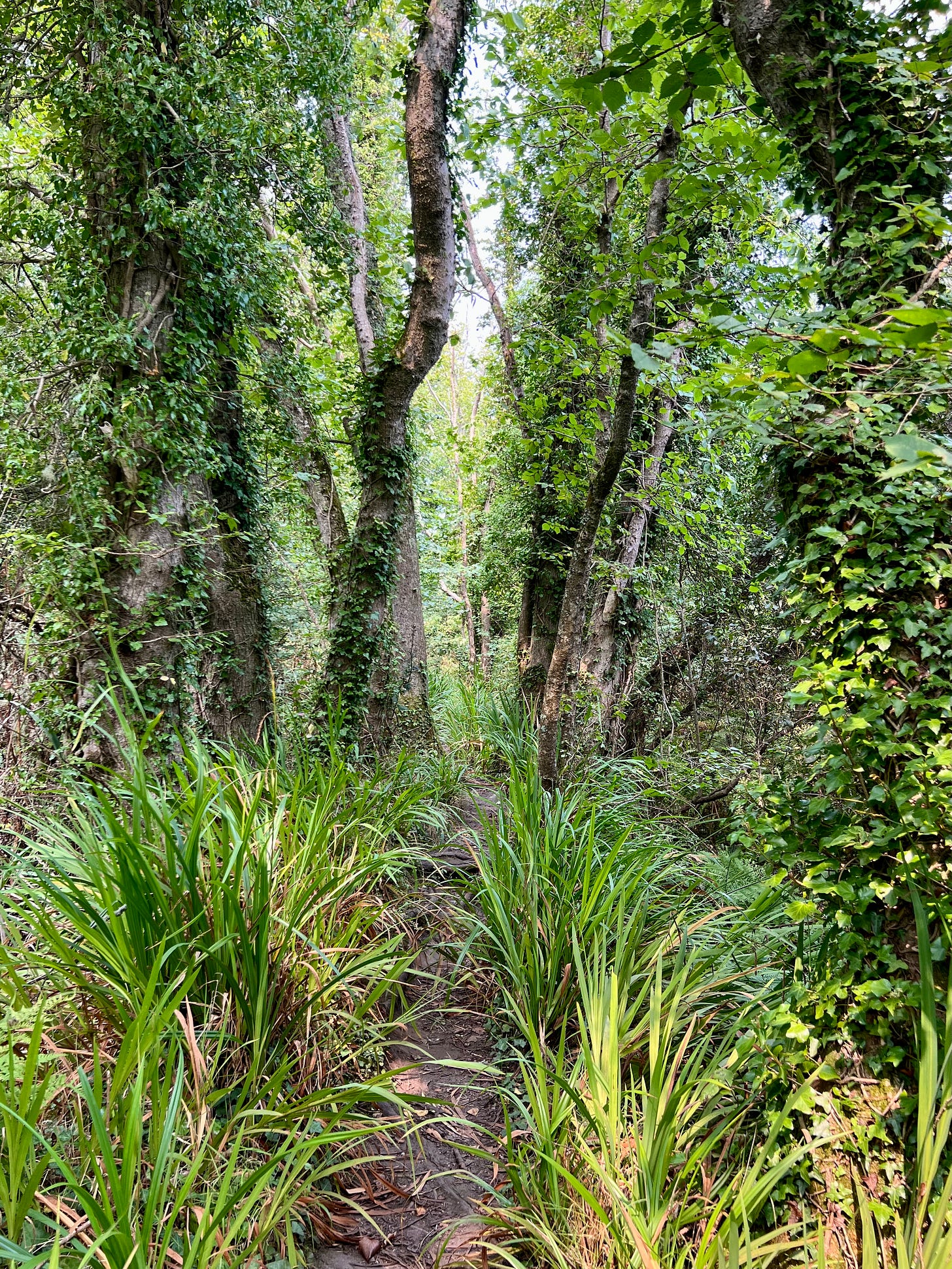
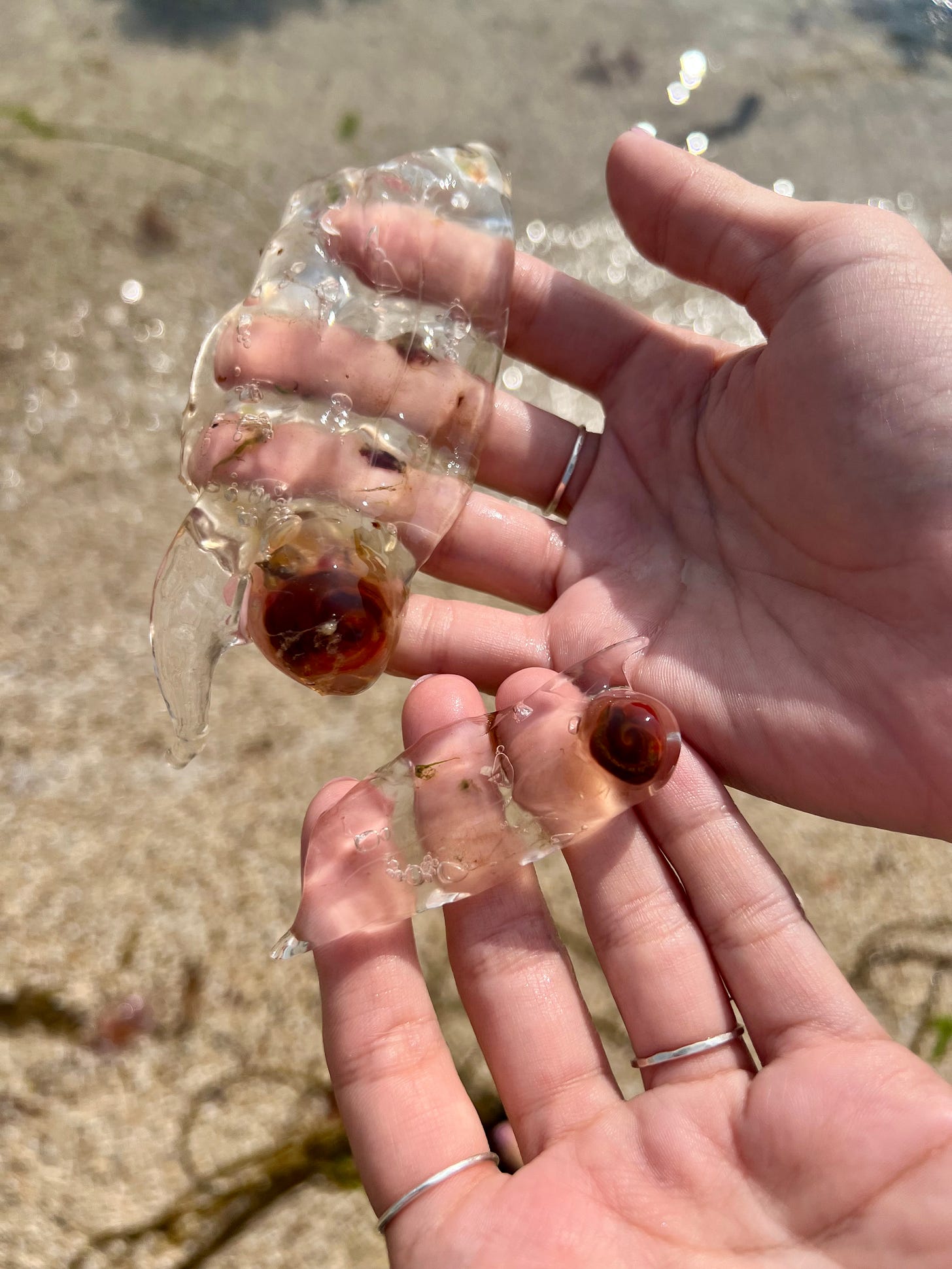
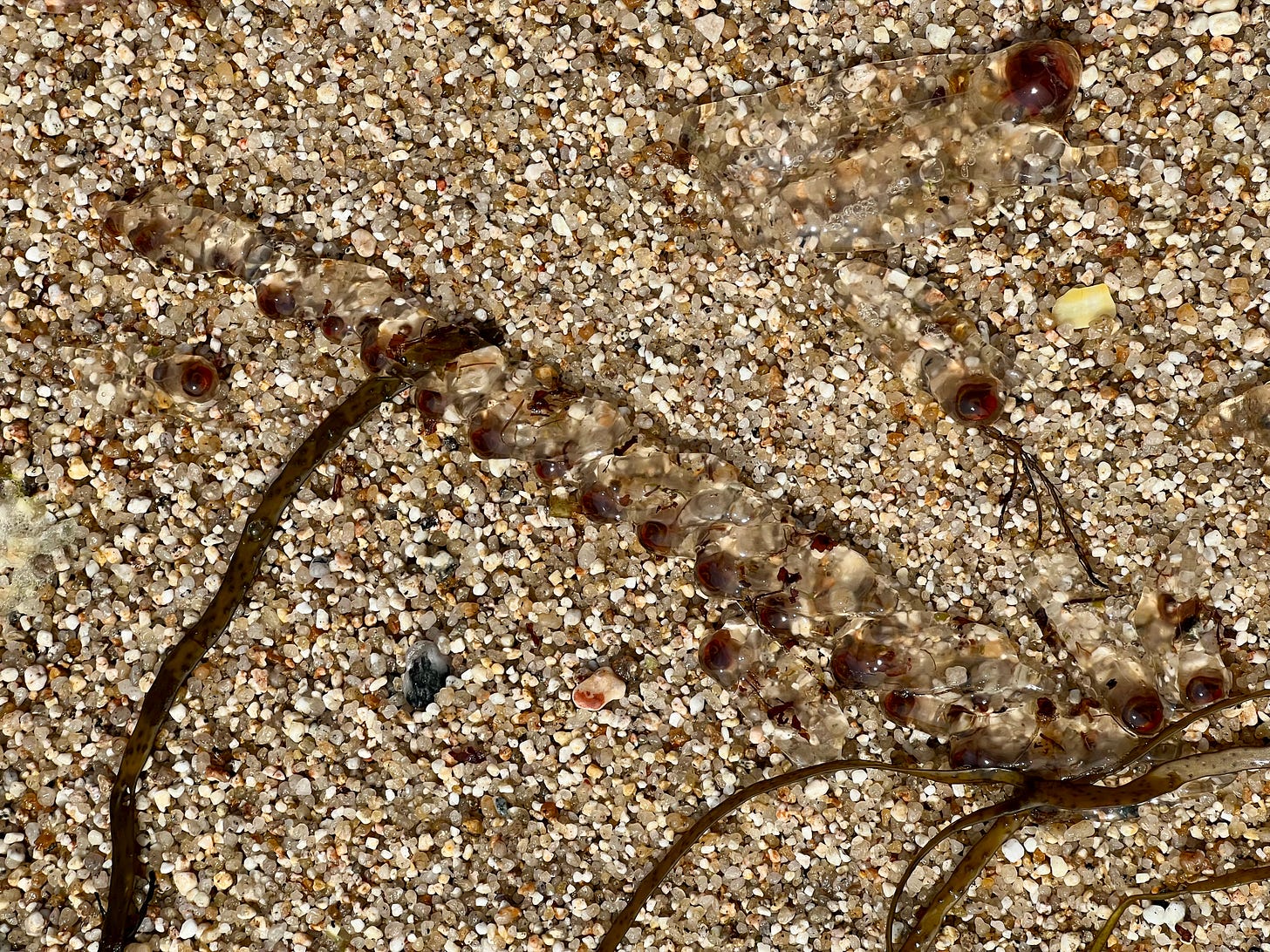
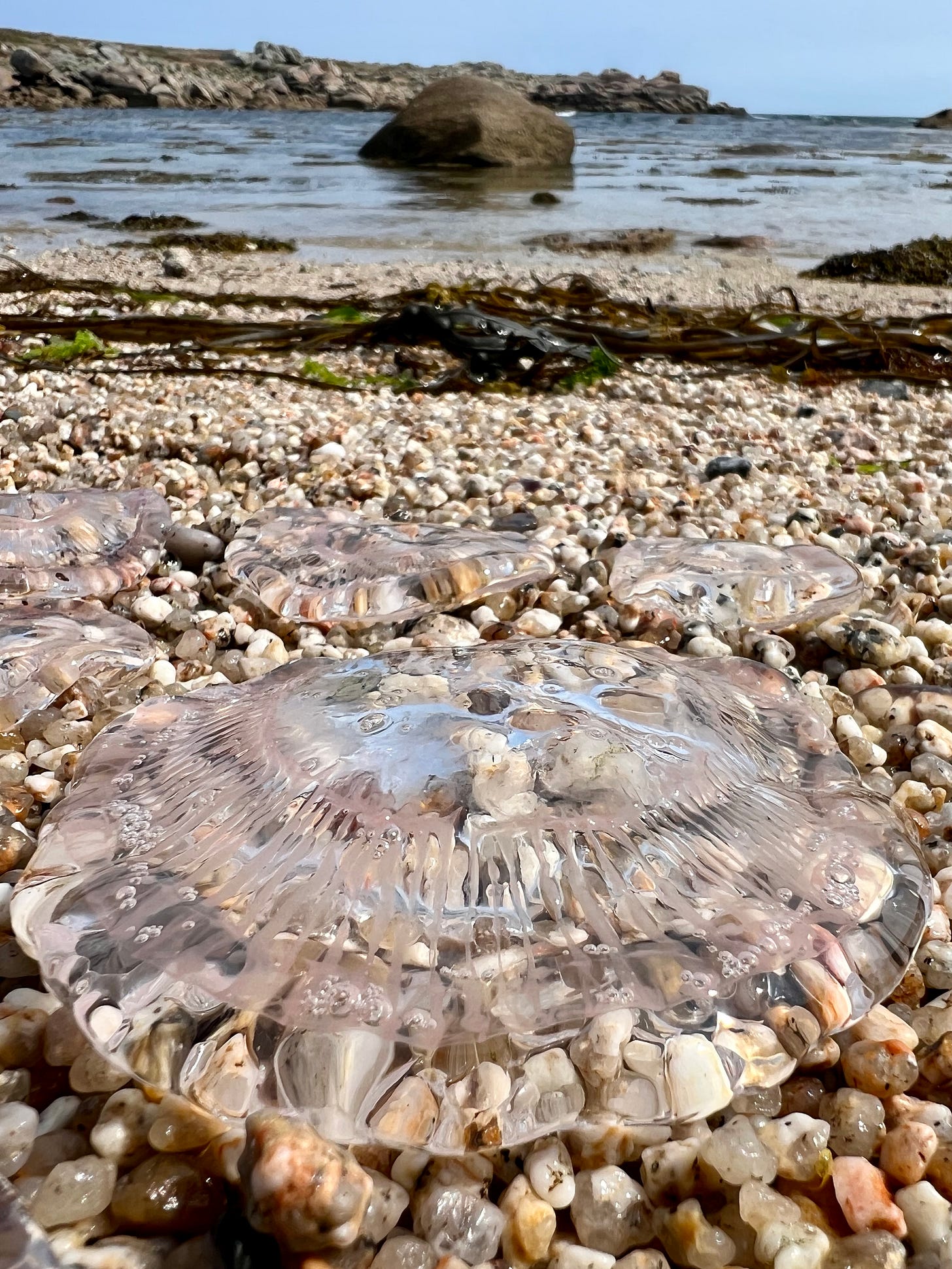
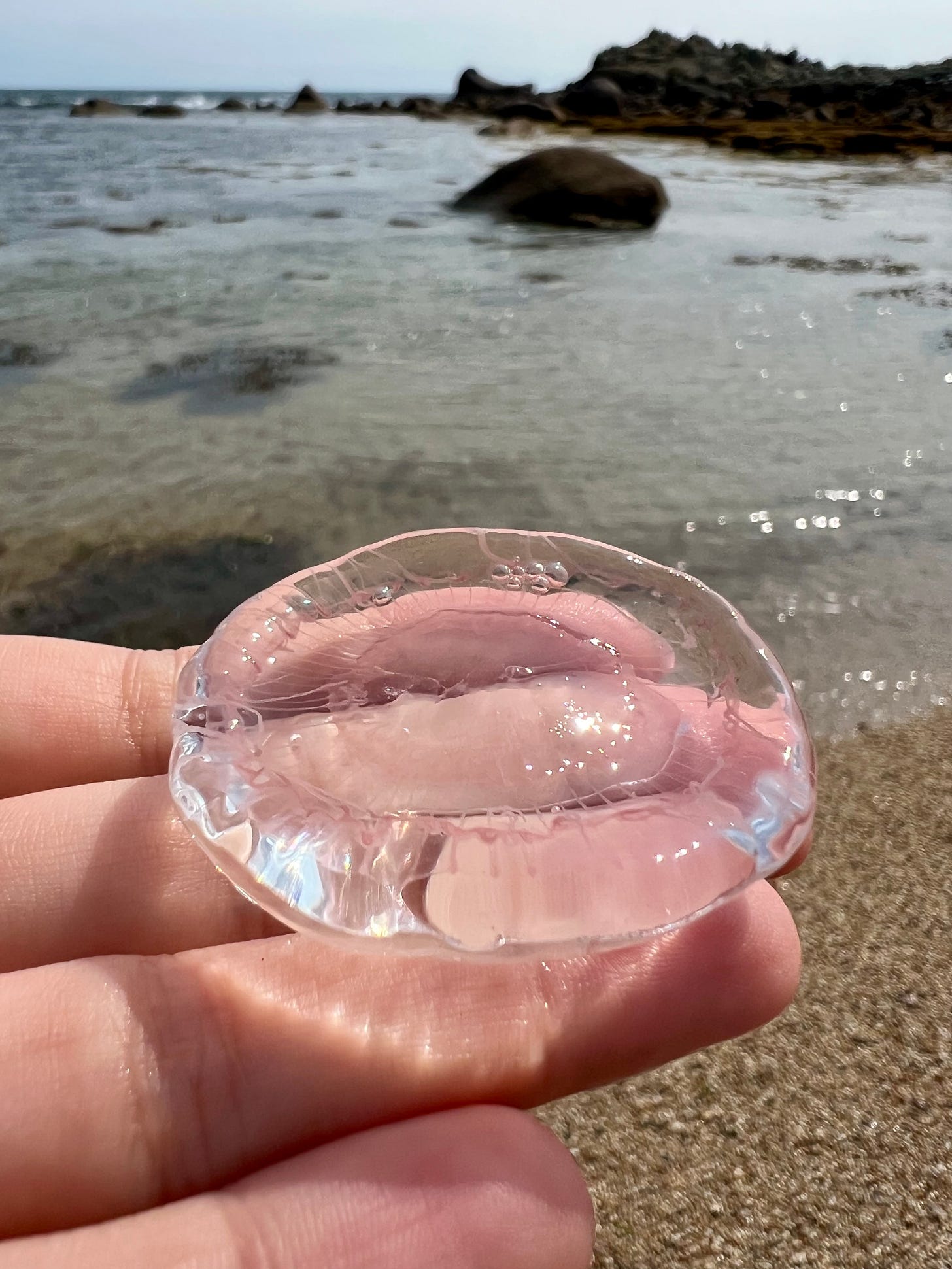
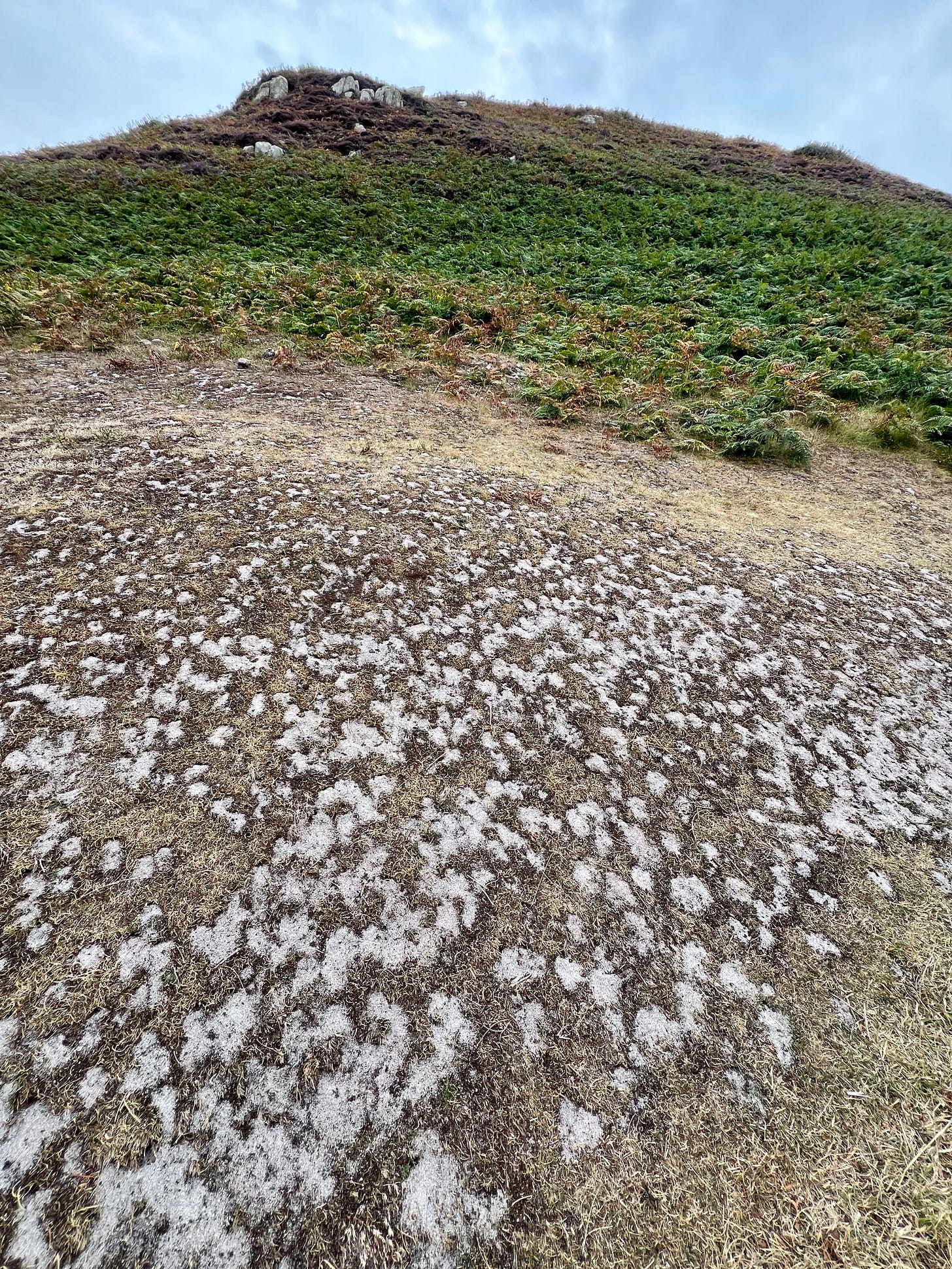
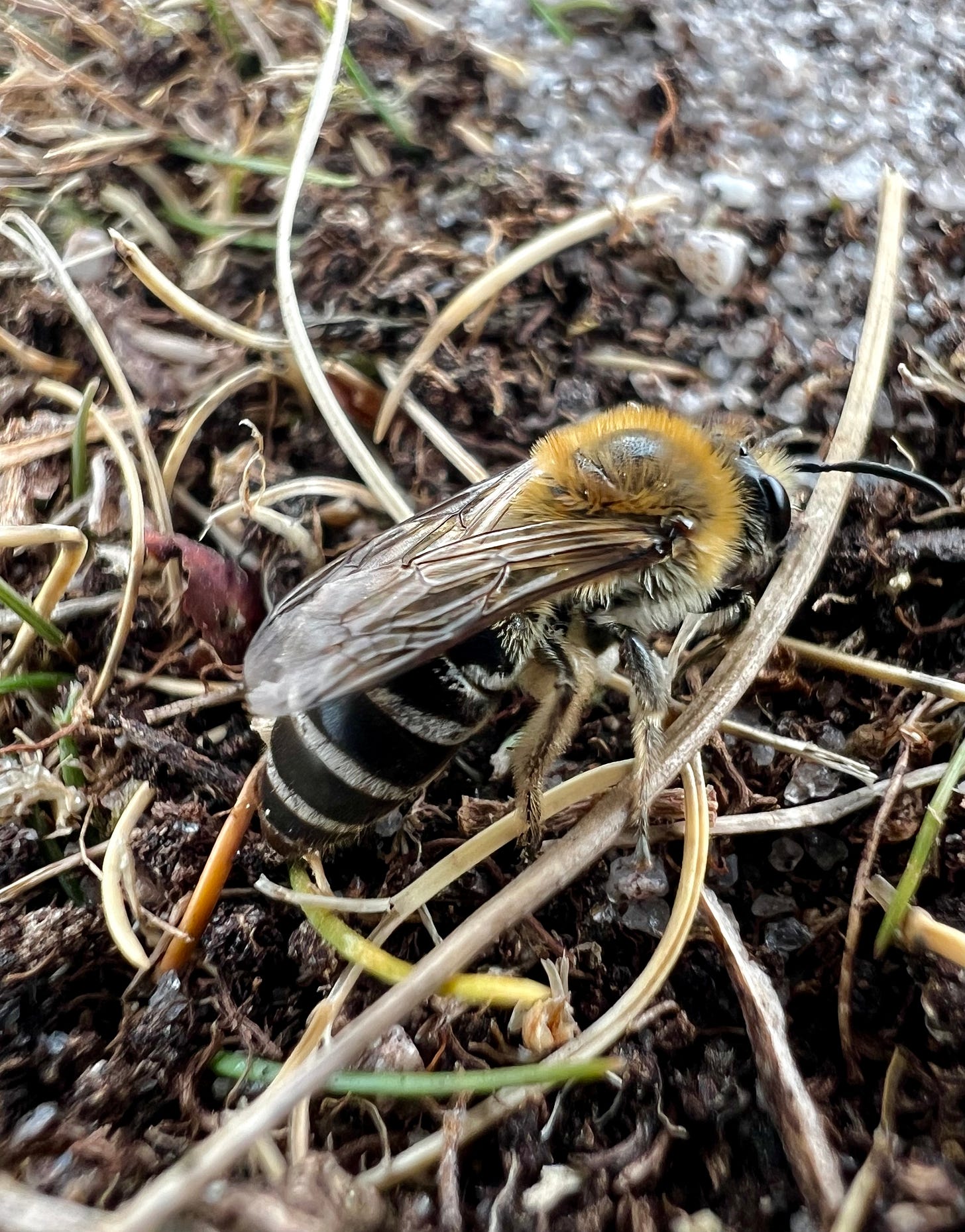
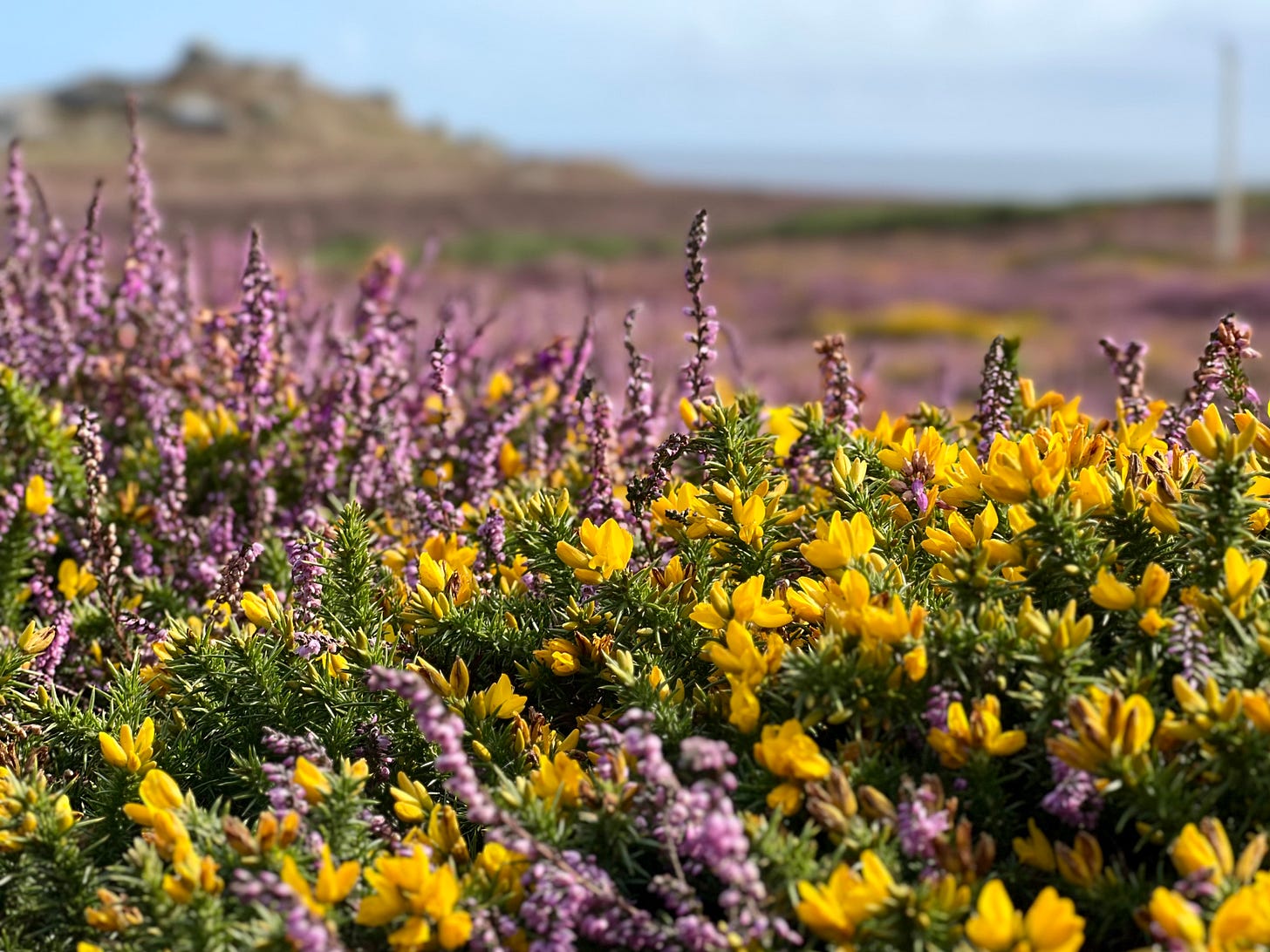
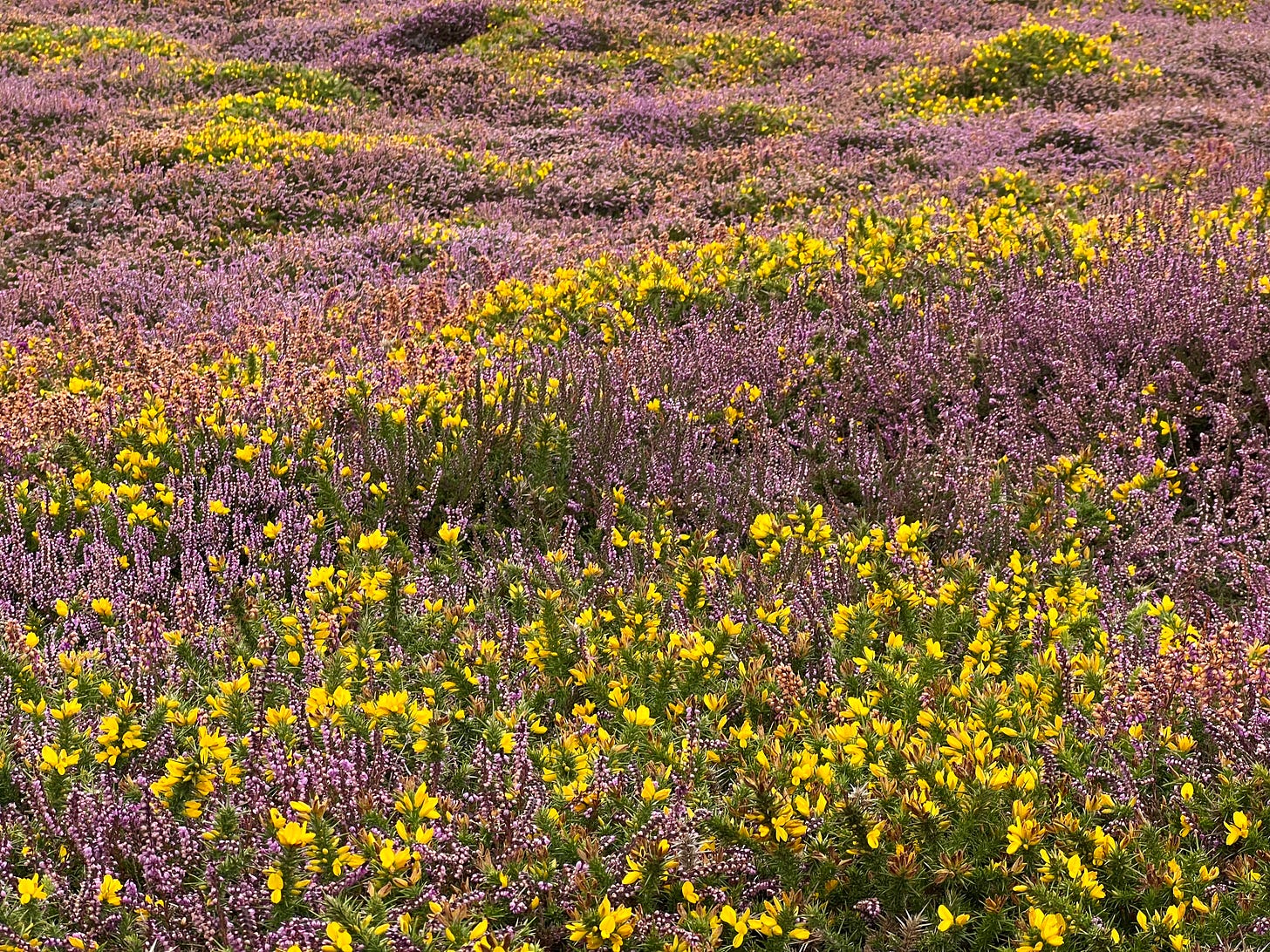
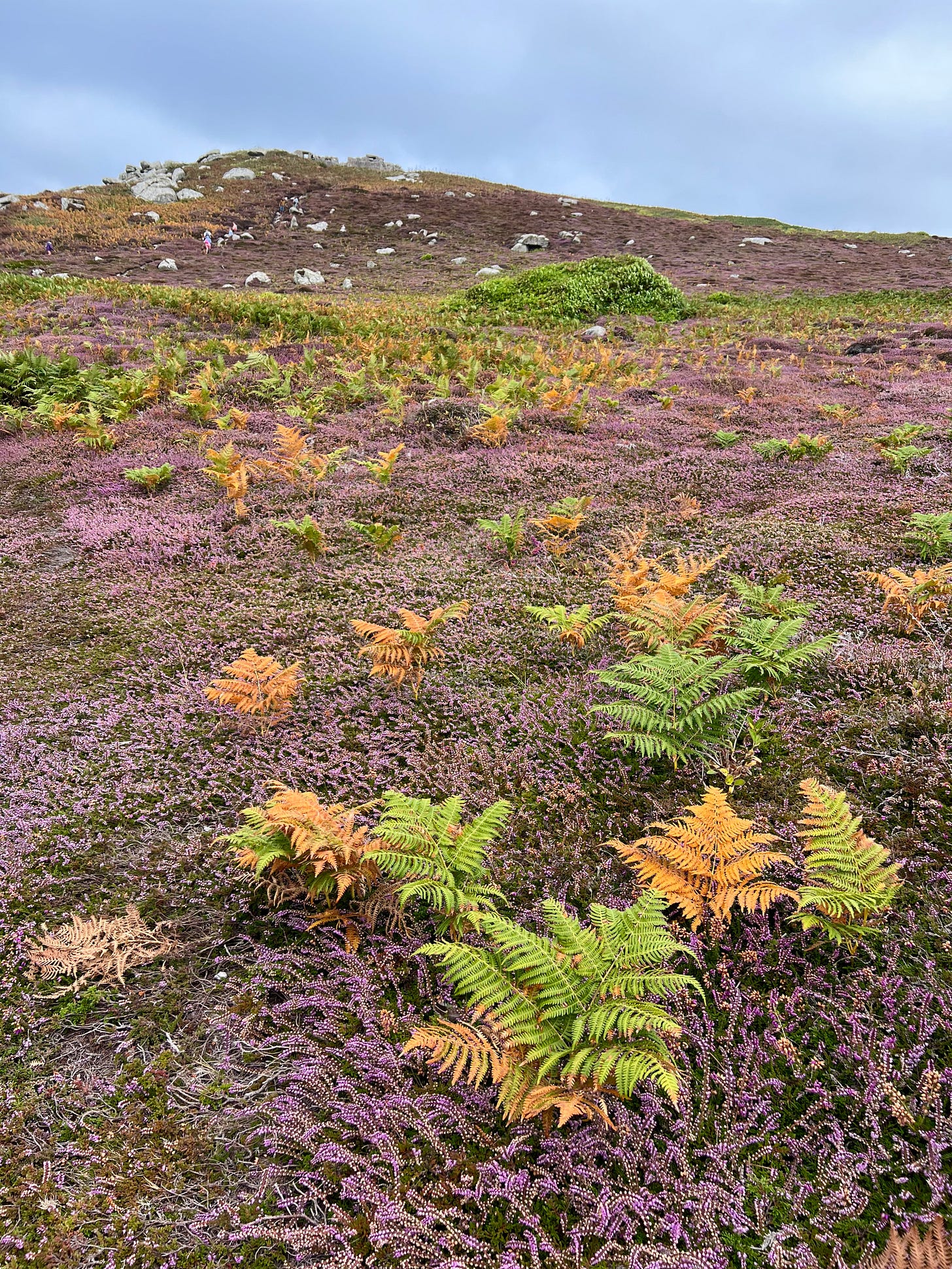
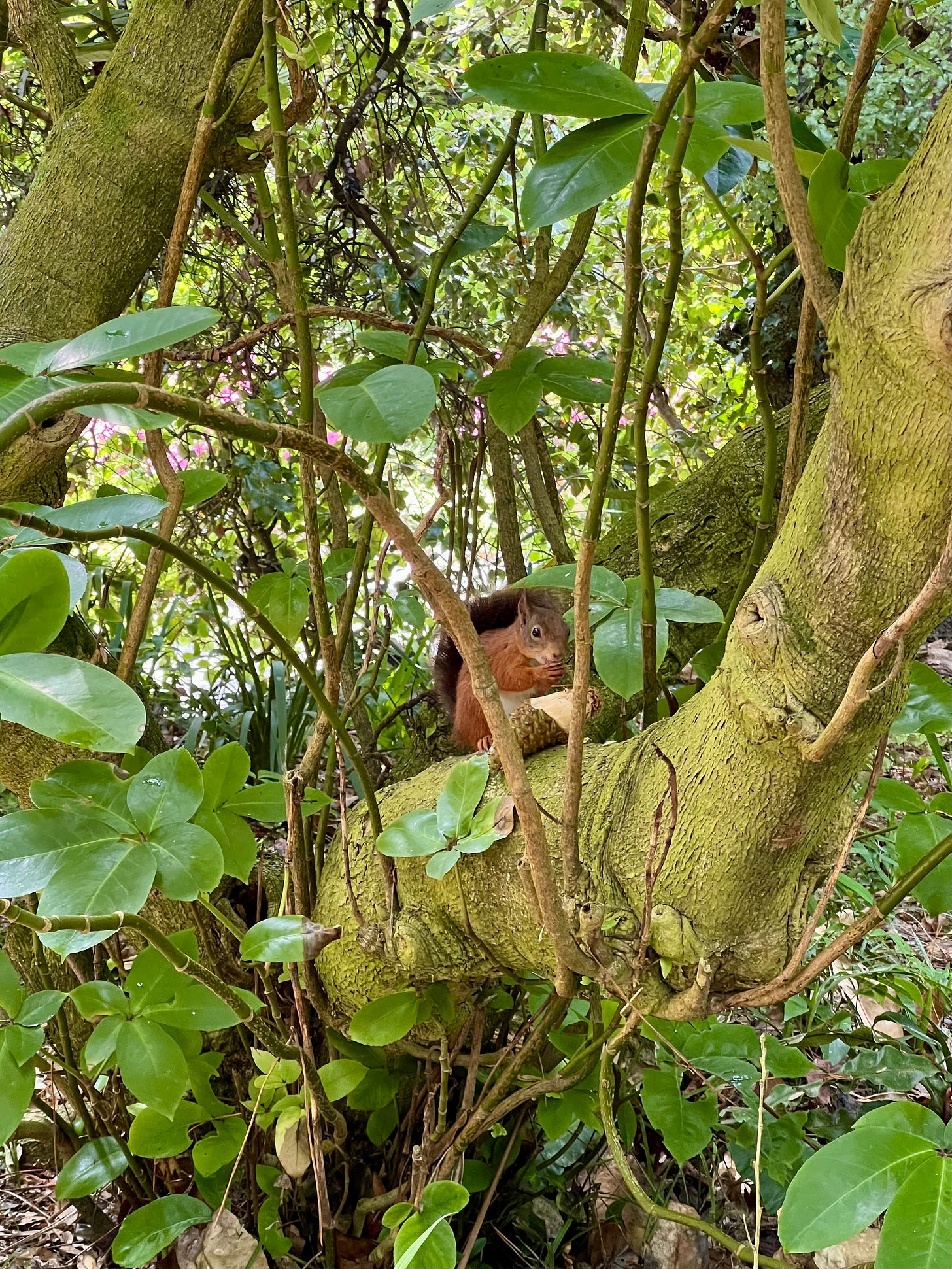
Gorgeous photos of somewhere I have always wanted to visit, but never got round to. I particularly loved the photos of the salps and the jellyfish.
What a lovely place. Thanks for sharing!